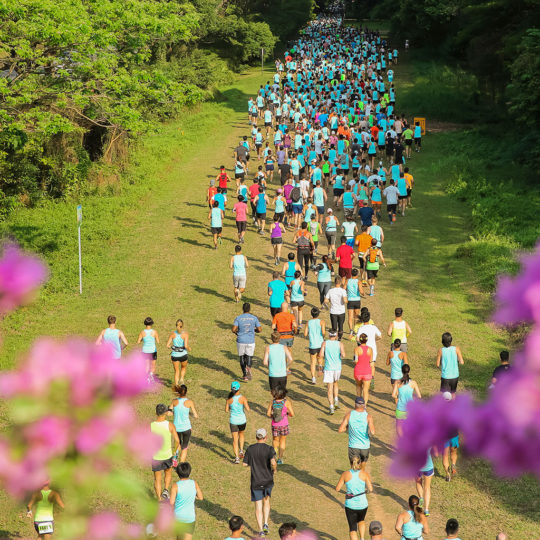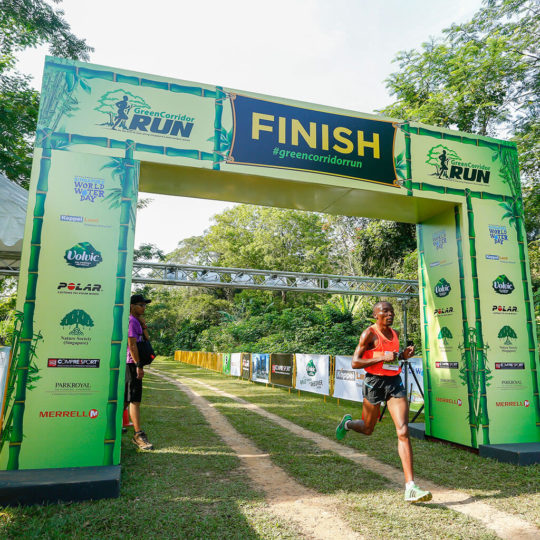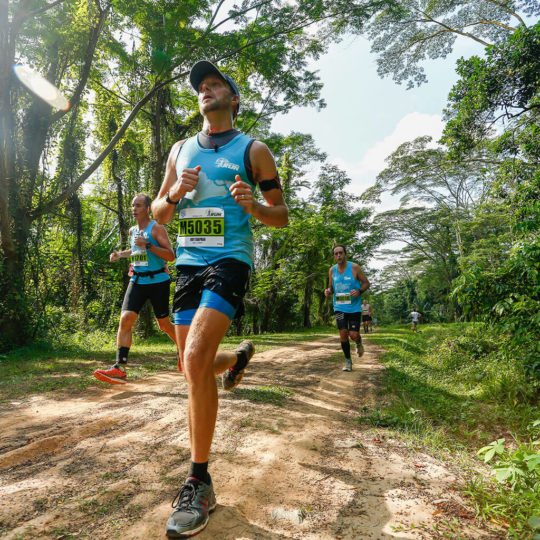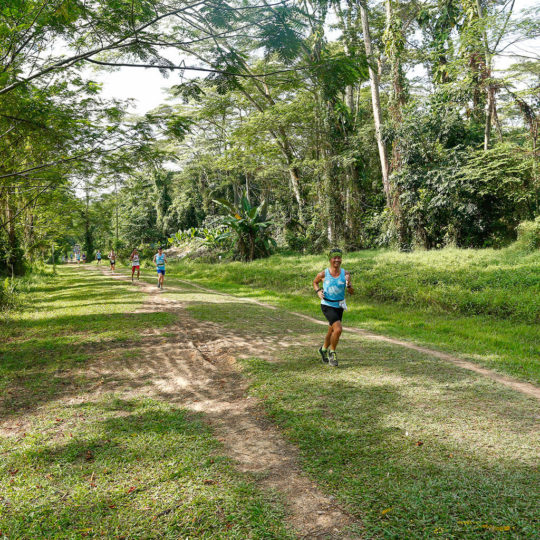RUN to rewild
The PUB Green Run (formerly known as the Green Corridor Run) is back and we are on a mission to contribute to the rewilding of the Rail Corridor, an initiative under the National Parks Board’s 'OneMillionTrees' movement.
The 2021 edition of the PUB Green Run is a virtual race with a very real purpose. For every person who participates, $10 will be donated to the Nature Society (Singapore)’s role in the rewilding effort, enhancing the natural habitat along the Rail Corridor, improving its ecological connectivity and cooling the area for recreational users.
Register now, encourage your friends to do the same, and together we can make a place that we love, even better!
Tracks, trails and trees
The Green Corridor Run (2013) was the first ever race to be held along the Rail Corridor after the KTM rail line was removed.
The Green Corridor Run sold out every year from 2013-2016 and succeeded in raising awareness for this incredible stretch of land. It’s popularity demonstrated just how passionate Singaporeans are about the Rail Corridor.
The Green Corridor Run made such an impact that Prime Minister Lee referred to it in his 2016 National Day Rally speech and it was mentioned by Minister Tan Chuan Jin in parliament.
The southern section of the Rail Corridor was closed between 2016 – 2021 for the installation of the Murnane Pipeline, re-opening earlier this year.
Join us in the next chapter of this exciting 'growth' story.
2021 race
The 2021 edition of the PUB Green Run is a virtual race with a very real purpose.
Using the PUB Green Run app to record your race, you can complete your run at any location between 18th September – 31st October, 2021.
Participants receive a premium running cap and finisher medal, but most importantly, you are contributing to the rewilding of the Rail Corridor, benefitting future generations. Now that’s a race pack item you can be proud of!
Race Categories
The PUB Green Run 2021 has two categories.
The 10KM CLASSIC is the main category. Everyone from competitive runners to walkers are welcome.
The second category is the 3KM FAMILY, a non competitive category that provides parents with a fun and engaging way to bond with the kids over a shared goal, while teaching them about environmental awareness, charitable giving and healthy living.
How it works

REGISTER
Register online for the PUB Green Run and $10 from your entry fee directly contributes to the Nature Society (Singapore)’s role in the rewilding of the Rail Corridor.


RUN
Using the PUB Green Run app to record your race, complete your run at any location between 18th September – 31st October.


REWILD
You run will contribute to the Nature Society's effort to rewild the Rail Corridor as part of NParks 'OneMillionTrees' movement.
Rewilding Project
The Nature Society (Singapore) is aiming to rewild stretches of the Rail Corridor as part of NParks 'OneMillionTrees' movement.
By involving stakeholders and the local community, the rewilding project will help create a continuous green canopy along the Rail Corridor, acting as a conduit for plants and wildlife and assist in the re-establishment of rare native species.
It will also enable greater carbon sequestration/storage and help to cool down the area for recreational users.
Find out more about the project here.

premium cap + medal
Join the race and you'll receive a premium PUB Green Run running cap and a finisher medal (if you opt in).
Designed with breathable panels, a soft brim and natural tones, this lightweight and versatile cap is super comfortable on a trail run or a coffee run.
Pub
PUB is Singapore’s National Water Agency and the proud Main Partner of the PUB Green Run.
“Partnering Groundswell to organise this eco-friendly virtual run extends from PUB’s commitment towards creating a Sustainable and Green Singapore.
Protecting the environment for the coming generations begins today. At PUB, we are conscientiously practising environmentally friendly habits such as reducing water wastage as well as single-use plastics, increasing solar energy usage and supporting more tree planting, with the aim to reduce our carbon footprint.”
Ms Chong Mien Ling, Chief Sustainability Officer, PUB
Contact us





